AI SOLUTION ARCHITECT
TUESDAYS & THURSDAYS
5:30 PM AEDT
13 JAN 2026 - 19 MAR 2026
DURATION:
9 WEEKS
TUESDAYS & THURSDAYS
5:30 PM AEDT
Learn how to design and deliver end-to-end GenAI solutions, from proof of concept to a production-ready architecture.
Led by Adelina Balasa, Microsoft’s Sr Technical Program Manager for Global AI Delivery Strategy, you’ll be equipped with the skills, frameworks, and hands-on experience to level-up your AI career.
THIS COURSE IS FOR YOU, IF...
-
YOU ARE A MID-LEVEL SOLUTION ARCHITECT
Overwhelmed by the pace of AI? You know cloud and data fundamentals, but the rapid evolution of GenAI can feel impossible to keep up with. This AI architect course gives you a structured methodology to master GenAI building blocks like RAG pipelines, agentic architectures, and prompt engineering, so you can apply them to real-world projects.
-
YOU ARE A TECHNICAL PRO
Want to step up into senior roles but lack the comprehensive understanding of AI architectures? This AI architect course fast-tracks your learning, giving you strategic and technical expertise that usually takes years on the job. By the end, you’ll be ready to design end-to-end GenAI solutions and make informed technical decisions in your team.
-
YOU ARE A SENIOR ARCHITECT
Extensive experience in AI but limited exposure to the latest GenAI architectures? Get a structured framework for scaling AI responsibly, from initial business ideation to production deployment. Learn to lead teams, make informed architectural decisions, and implement cutting-edge agentic systems with confidence.
Our students work in 1600+ companies worldwide
Work through 5 assignments and 5 workshops that immerse you in the technical foundations of GenAI. In this AI architecture course, you’ll learn prompt engineering, implement RAG pipelines, manage vector databases, and assemble a working GenAI POC. Every exercise builds skills you can apply immediately in your job.
Analyse GenAI projects from ChatGPT to multi-agent systems, exploring successes, failures, and ethical pitfalls. Learn the frameworks that industry leaders use to deliver AI responsibly at scale, and translate these lessons into your own architecture designs.
Deliver a story-driven, technically rigorous POC presentation. Show your journey from identifying an industry problem to creating a production-ready GenAI solution with Responsible AI considerations. Includes a narrative deck and demo video showcasing your RAG system in action.
- Shapes Microsoft’s global Azure AI delivery strategy, scaling AI solutions across private and public sectors
- Founded Microsoft UK’s Responsible AI Centre of Excellence
- Delivered AI Cloud Solutions for 50+ enterprise clients across multiple industries
- Led both pre-sales and post-sales AI adoption and strategy engagements at IBM, Palantir, and Microsoft
- Hands-on with cloud, RAG, agentic architectures, and GenAI deployment
- Mentors women in AI leadership through Women @ Microsoft
- Balances technical expertise with business strategy, ethics, and innovation

Get the lay of the land, meet your instructor, and see what’s ahead. We’ll kick things off with where AI stands today, where it’s headed next, and why there’s never been a better time to dive into tech.
- Instructor intro
- Course structure
- Assignments & final project
- AI overview
Trace AI’s journey from rule-based systems to GenAI, decode the jargon, and see how architects help shape the big picture through real-world case studies.
- A brief history of intelligent systems
- Case Studies: ELIZA, Chess (IBM Deep Blue), Go (Google DeepMind AlphaGo)
- Core concepts of traditional ML frameworks
- Terminology
- Roles in AI projects & Cloud Solution Architect
Self-Study Activity: Pick one of the case studies (ELIZA, Deep Blue, AlphaGo, ChatGPT) and write a short reflection: What problem was it solving? Why was it a breakthrough?
Get clear on what makes GenAI tick and how it’s not your regular ML. Learn the key models, the lingo, and when to call in GenAI vs. stick with traditional ML.
- Case Study: ChatGPT
- Types of GenAI models
- Terminology
- Traditional ML vs. GenAI
- Why and when to use ML & GenAI
Self-Study Activity: Write a short reflection on the ChatGPT Case Study: What problem was it solving? Why was it a breakthrough?
Assignment #1: Choose an industry of interest and identify three AI use cases. For each, decide whether it can be addressed with Traditional ML, Generative AI, or a combination of both, and briefly explain your reasoning.
Build your GenAI foundation: understand how leading models work, who’s building them, and get your setup ready to run them yourself.
- Workshop: Setting up the environment
- GenAI models: Core concepts
- GenAI model providers & open source options
- Leading cloud providers
Self-Study Activity: Deploy a GenerativeAI model and call its API from the cloud platform.
Craft prompts that get the results you want. Experiment with zero-shot, few-shot, and chain-of-thought techniques, fine-tune outputs, and practice hands-on in a workshop to see which prompts perform best.
- Zero-shot, few-shot, and chain-of-thought prompting
- Structured output prompts & parameter tuning
- Evaluating & iterating prompts for better accuracy
- Workshop: Applying prompt engineering techniques
Self-Study Activity: Create 3 prompt variations, compare results.
Assignment #2: Choose one use case from your industry and design two prompts for it: one poorly constructed and one well-engineered. Show the outputs. Then, research two distinct models from leading GenAI providers and compare their strengths, limitations, and unique features.
Get hands-on with generative AI: explore fine-tuning vs. RAG, understand when to use each, and build your first working RAG pipeline from scratch.
- Introduction to fine-tuning
- Retrieval-augmented generation (RAG)
- RAG vs. fine-tuning
- Workshop: Implementing a basic RAG pipeline
Self-Study Activity: If you had a startup with limited budget, would you choose RAG or fine-tuning for your first AI product? Consider data freshness, compute cost, and ease of updates.
Learn to prep data like a pro: chunk, embed, and store it in vector databases to power retrieval-augmented AI workflows — then put it into practice in a hands-on workshop.
- Chunking strategies & why they matter
- Embeddings & semantic search
- Vector databases
- Workshop: Ingesting & storing a dataset in a vector DB
Self-Study Activity: Create a power point presentation where you create a proposal for a solution with a RAG architecture.
Assignment #3: Implement the RAG architecture with working code. Ingest + chunk + embed a dataset, store in vector DB, build retrieval + generation flow. Explain and justify your chunking strategy of choice.
Explore real-world AI misuse, understand global and local regulations, and apply responsible AI frameworks to design ethical, trustworthy, and compliant solutions.
- Case Studies: Global & local examples of AI misuse
- Law & governance: Global & local regulations
- Responsible AI frameworks: Traditional & GenAI
Self-Study Activity: Work with your industry scenario, applying RAG to create a solution for your industry. What databases or data layers would you connect to? Map out 3 possible Responsible AI risks & propose one mitigation for each.
Bring your GenAI ideas to life. Combine everything from Weeks 1–4 into a working RAG-based prototype and learn the best practices that make your POC practical and scalable.
- Creating a working GenAI solution
- RAG POC architecture walk-through
- Best practices: What makes a good GenAI POC
- Workshop: Assembling a working POC in code
Assignment #4: Start your Capstone Project. Design and implement a working Proof of Concept (POC) for a GenAI solution that integrates RAG architecture, vector databases, embeddings, and prompt engineering. Demonstrate your chunking strategy, identify Responsible AI risks with mitigations, and test your solution with sample queries.
See how GenAI is shaking up industries. Explore real-world examples, spot what works, what doesn’t, and learn to identify patterns that deliver value.
- Public sector examples
- Private sector examples
- GenAI & workflows, customer engagement, business models
- Common pitfalls
Self-Study Activity: Research a sector of your choice and outline 3 high-value GenAI use cases, describing how they impact the businesses.
Spot why POCs get stuck and learn how to push them into production. From business misalignment to tech gaps, trust issues, and innovation hurdles, get practical strategies to keep projects moving.
- Business misalignment & ROI
- Trust
- Technical foundations
- People & skills gaps
- Pace of innovation & ecosystem volatility
Self-Study Activity: Continue your Capstone. Draft an analysis identifying 3–5 potential risks or barriers that could prevent your POC from progressing to production. Consider both technical and business factors & explain the impact with a possible mitigation strategy.
Dive into single-agent systems: understand how they differ from standard LLM calls, explore real enterprise use cases, and learn to prompt, plan, and manage agents effectively while avoiding common pitfalls.
- Agent definition
- Enterprise use cases for single-agent systems
- Prompting for agents: System prompts, role assignment, memory
- Challenges: Looping, hallucination of tools, guardrails
- Case Study: Real-world examples of single-agent solutions
Learn how AI agents team up: study collaboration patterns, manage interactions efficiently, and discover how multi-agent systems solve complex business problems.
- Enterprise use cases for multi-agent systems
- Collaboration patterns
- Coordination strategies
- Challenges: Cost explosion, latency, monitoring interactions
- Case Study: Real-world examples of multi-agent solutions
Assignment #5: Continue working on your Capstone. Design how you would evolve your RAG POC architecture into an Agentic Solution for a specific use case of your choice.
Learn how landing zones power secure, compliant, and scalable AI in the cloud. You’ll explore architecture, governance, identity, and networking while seeing best practices across GCP, AWS, Azure, and Databricks.
- Landing zones for AI workloads
- Security, governance, compliance guardrails
- Identity & networking
- Best practices for landing zones: GCP, AWS, Azure, Databricks
Self-Study Activity: Continue working on your Capstone. Design an architecture diagram for a landing zone plan for your Agentic Solution on a cloud provider of your choice.
Get GenAI out of the lab and into production. Learn how to set up CI/CD pipelines, manage AI lifecycles, and run GenAI Ops efficiently across cloud platforms.
- MLOps vs. GenAI Ops lifecycle
- CI/CD for AI models & prompts: Dev → test → prod
- Best practices for GenAI Ops: GCP, AWS, Azure, Databricks
Self-Study Activity: Create a GenAI Ops workflow diagram for your Agentic Solution as a part of your Capstone.
Learn how to fine-tune your GenAI solutions for real-world use: optimize speed, cut costs, and get your models production-ready.
- Cost-performance trade-offs
- Latency reduction
- Prompt optimization
- Vector DB optimization
- Caching & reuse
Self-Study Activity: Estimate monthly costs and latency for your Agentic Solution and propose optimization strategies as a part of your Capstone.
Your GenAI doesn’t stop at launch. Track performance, fix glitches, and evolve your models to keep delivering impact and business value.
- Monitoring performance & usage trends
- Alerting for drift, failures, cost anomalies
- Updating prompts, models, integrations
Self-Study Activity: Final stages for your project! Design a way to monitor and alert the system owners for your Agentic solution, post-go-live.
Show off your Capstone Project and walk through your production designs. Get targeted feedback from peers and your instructor to refine your proof of concept and sharpen your architecture skills.
- Capstone presentations
- Peer & instructor feedback
Get clear on what it takes to become an AI Solution Architect, spot the skills employers are hunting for, and learn how to position yourself for the right opportunities in an evolving AI landscape.
- Role clarity
- Skills in demand
- Building your profile
- Interview prep
- Future AI trends
Self-Study Activity: Create a personal action plan for your GenAI career path.
What our students say

"I really enjoy the format of the course. Lectures with real life examples and an ongoing case study. Also built in 20 minutes at the end of each class for questions is helpful."

"Overall I'm impressed with the level of detail and explanation around particular topics and subjects. There's a real depth to each module which for learning allows the information to stay in your brain."

"The group activities, they allow us to interact and exchange ideas, plus the way it is structured is challenging and mind twisting as we collaborate in different parts of the ideation."

"I enjoyed the structure of the class. I like how we learned about a topic and practiced it in the workshops. It’s helped me to apply what I learned!"



